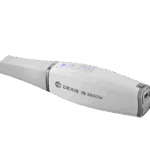Canada issued an updated medical device license for Align Technology’s Invisalign Palatal Expander System.
Align Technology announced that Health Canada issued an updated medical device license to Align for its Invisalign Palatal Expander System. The updated license is for broad patient applicability, including growing children, teens, and adults (with surgery or other techniques). The Invisalign Palatal Expander System is available on a limited basis in Canada.
The Invisalign Palatal Expander System is a direct 3D printed device based on proprietary and patented technology. Invisalign Palatal Expanders are intended for use in rapid expansion and subsequent holding of skeletal and/or dental narrow maxilla (upper jaw) with primary, mixed, or permanent dentition during treatment of patients. The Invisalign Palatal Expander is Align’s first direct 3D printed orthodontic device and provides a safe, comfortable, and clinically effective alternative to traditional palatal expanders that require manually turning a screw in the device in the mouth daily to achieve expansion.
The Invisalign Palatal Expander System consists of a series of removable devices staged in small increments of movement to expand a patient’s narrow maxilla to a position determined by their treating doctor. Each direct 3D printed device is customized to the patient’s unique anatomy based on an iTero intraoral digital scan. A palatal expansion treatment plan and device design are then developed using Align’s proprietary AI-driven orthodontic software.
Combined with Invisalign First aligners, Invisalign Palatal Expanders provide doctors with a full early intervention treatment solution for Phase 1 treatment, an early interceptive orthodontic treatment for young patients. Phase 1 treatment is traditionally done through arch expanders or partial metal braces, before all permanent teeth have erupted – typically at ages 6 through 10. Invisalign First clear aligners are designed specifically to address a broad range of younger patients’ malocclusions, including shorter clinical crowns, management of erupting dentition, and predictable dental arch expansion.
“Phase 1 or early interceptive treatment makes up 20% of orthodontic case starts each year and is growing,” said Mitra Derakhshan, DDS, MS, Align senior vice president, global clinical. “Together with Invisalign First aligners, Invisalign Palatal Expanders provide doctors with a solution set to treat the most common skeletal and dental malocclusions in growing children. The addition of mandibular advancement features to Invisalign aligners also provides doctors with more options for treating skeletal and dental jaw imbalances and bite correction for their growing patients during their teenage years.”
The Invisalign Palatal Expander System is pending pre-market notification 510(k) clearance by the U.S. Food and Drug Administration and is not yet available in the United States. It is expected to be available in other markets pending regulatory approvals starting in 2024.










